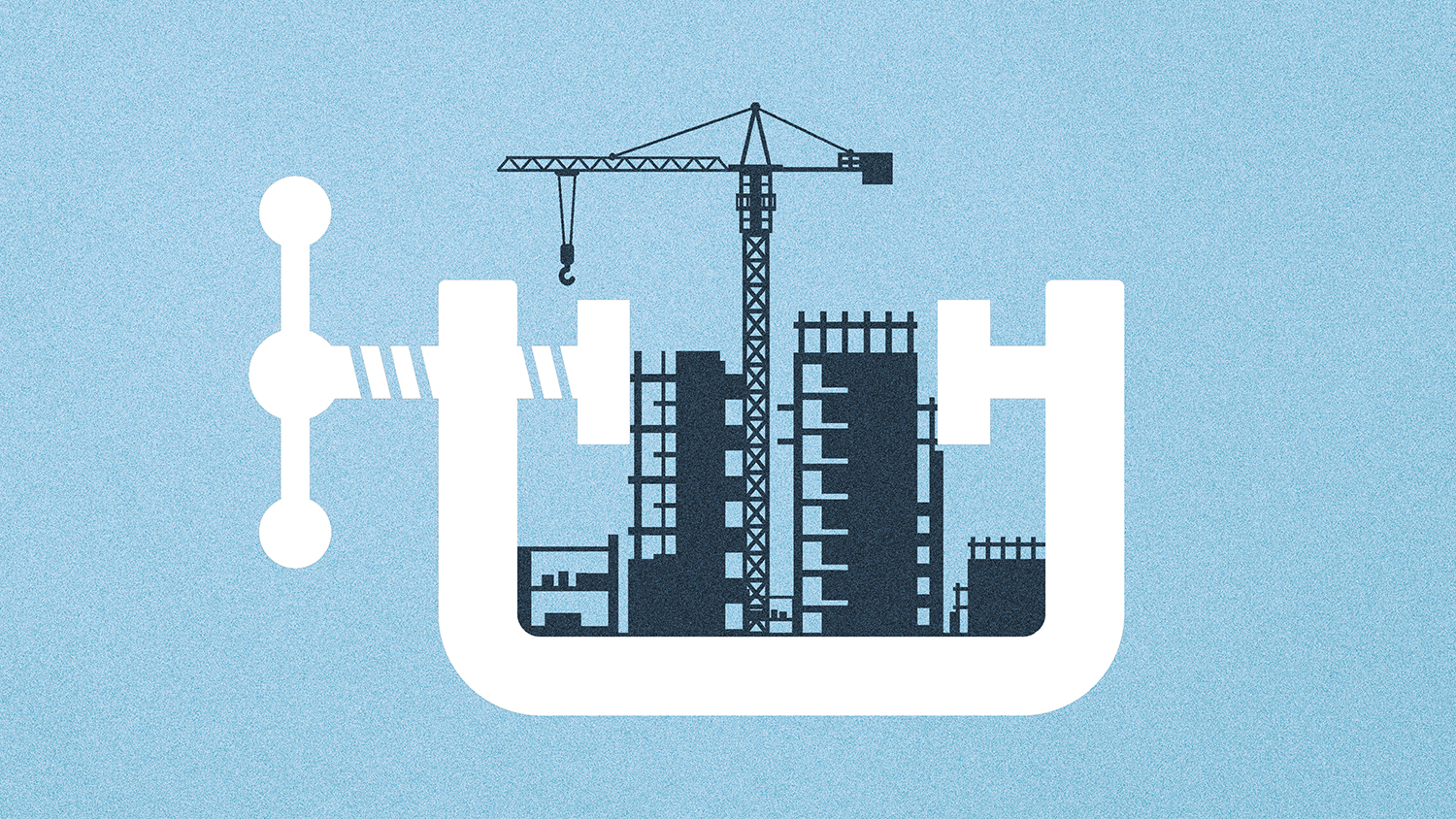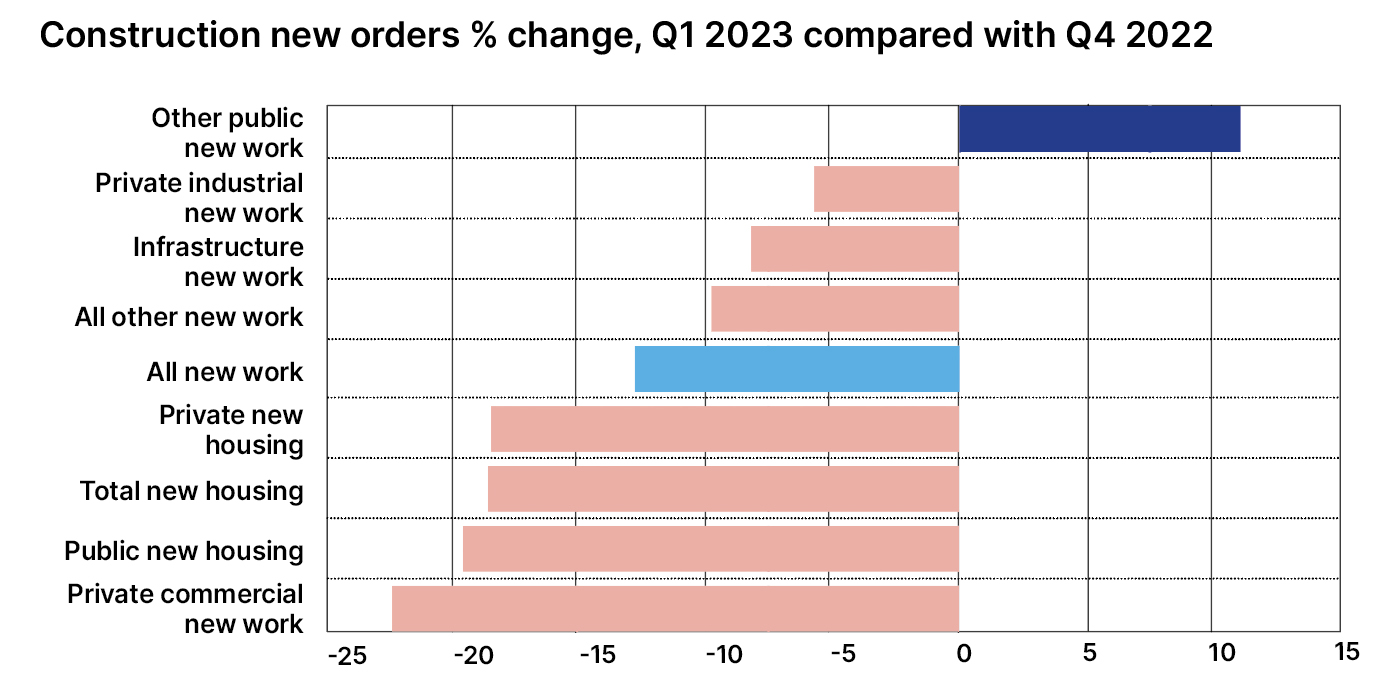
Skills shortages, falling outputs, rising costs and insolvencies are putting pressure on construction’s capacity, writes Pablo Cristi Worm.
The latest Bank of England forecasts suggest the UK may have avoided a technical recession. However, the construction sector is far from breathing a sigh of relief. Interest rates show few signs of easing, construction demand is cooling and high insolvencies are placing capacity under increasing pressure.
Key indicators of demand, such as sales of ready-mixed concrete, bricks, sand and gravel are trending downwards. They reflect a weakening in new orders by a substantial 12.3% in Q1 2023 compared with the previous quarter and by 14.3% compared with the same period last year. Against a backdrop of higher borrowing costs and prices for materials and labour continuing to rise, this fall is seen across almost all sectors.

Though construction output continued to increase in Q1 2023 compared with the final quarter of 2022, it was by a modest 0.7%, driven by repair and maintenance (R&M) work which rose by a significant 4.9%. Private housing R&M has seen a boom following the pandemic, while retrofit projects are also growing in response to government funding and legislation, including around energy efficiency standards.
Output for new work, on the other hand, declined by 1.9% over the quarter. The overall downward trend is expected to continue this year with the Construction Products Association (CPA) recently forecasting output to decline by 6.4% in 2023, a revision down on its previous prediction of a 4.7% contraction.
Shortage of skilled workers
Despite this cooling demand, capacity will likely remain a significant challenge for the sector, at least in the short to medium term. A shortage of skilled workers continues to put pressure on schedules and labour costs. At the same time falling output and rising costs are causing problems for contractor margins. Insolvencies in construction continue to soar – up by 9.7% in the year to Q1 2023.
As a result of these conditions, Turner & Townsend’s own forecasts for tender price inflation in the Q2 2023 Summer UK Market Intelligence report have increased slightly for real estate, up to 3.7% for 2023 and 2.7% for 2024.

In the face of these headwinds, some will be tempted to slow down investment in the hope of better conditions to come. However, with a subdued medium-term economic outlook, the strategy also comes with risk. One answer is to focus on programme planning and project controls – mitigating uncertainty through greater visibility.
Getting procurement right, such as considering more collaborative contracting frameworks, the proportioning of risk and building a deep understanding of supply chain capacity, will help to better plan for the challenges ahead. Putting digital strategies in place will also be important to continuously monitor and manage project performance and ensure delivery.
Pablo Cristi Worm is a senior economist at Turner & Townsend











